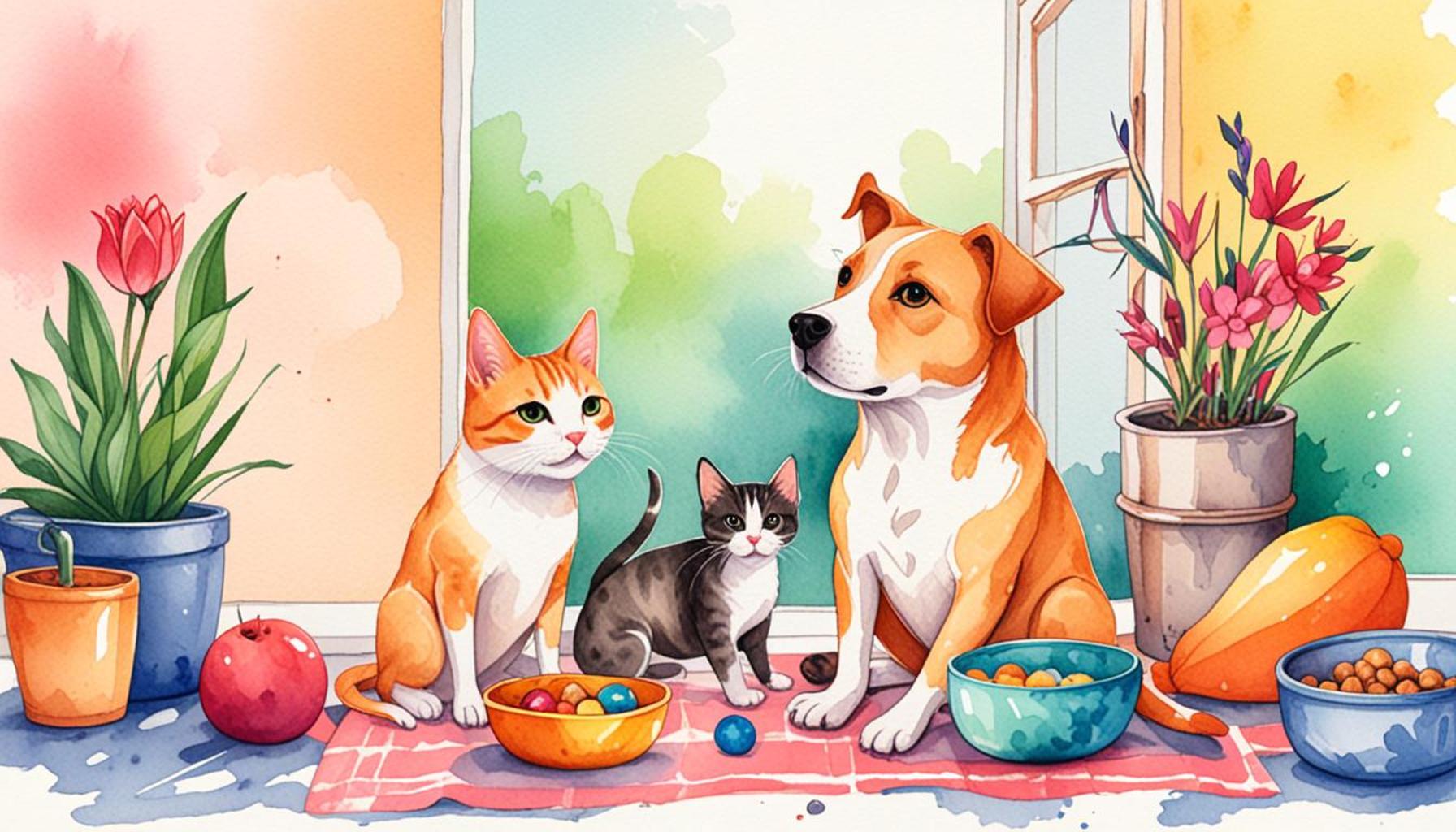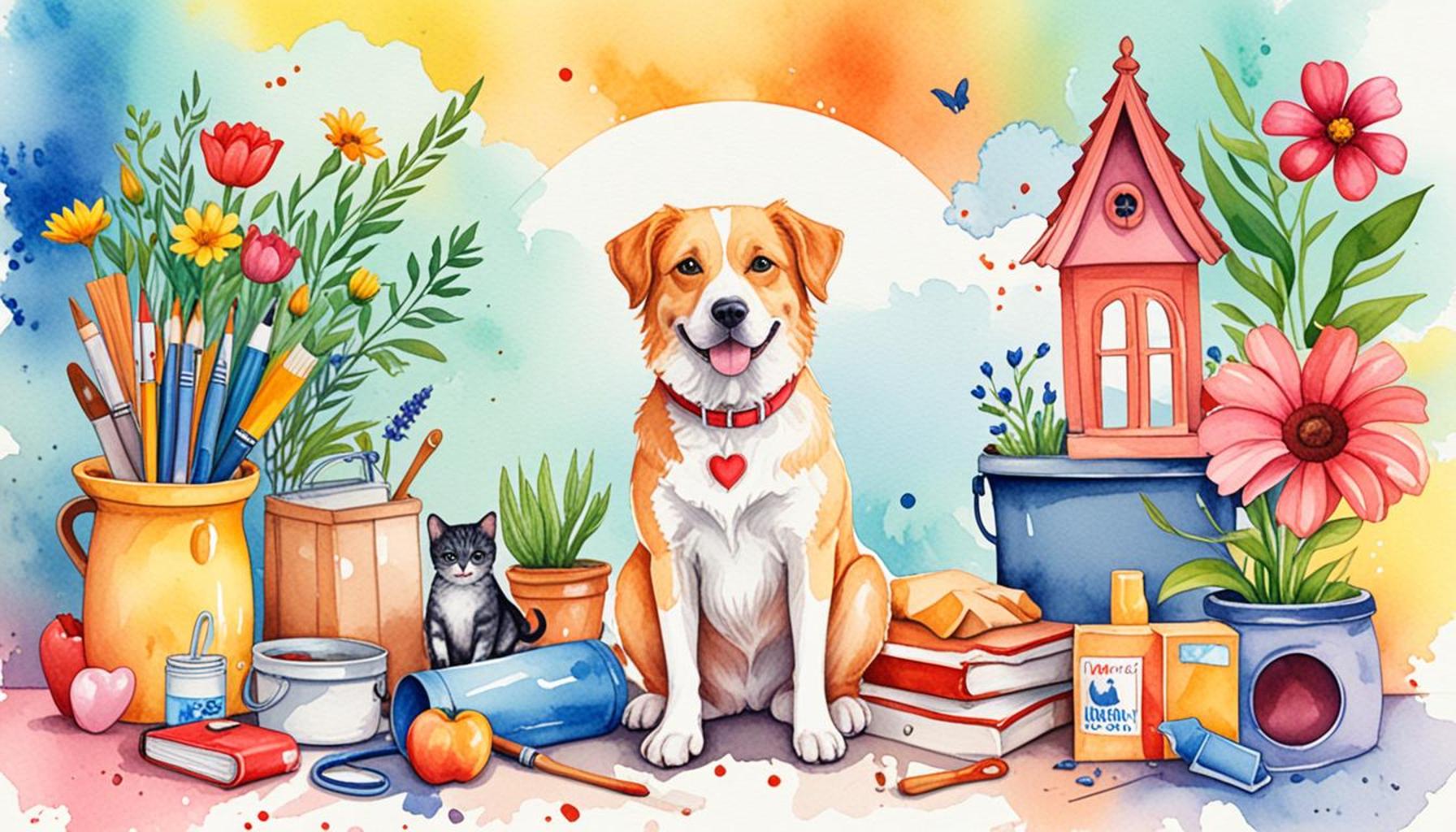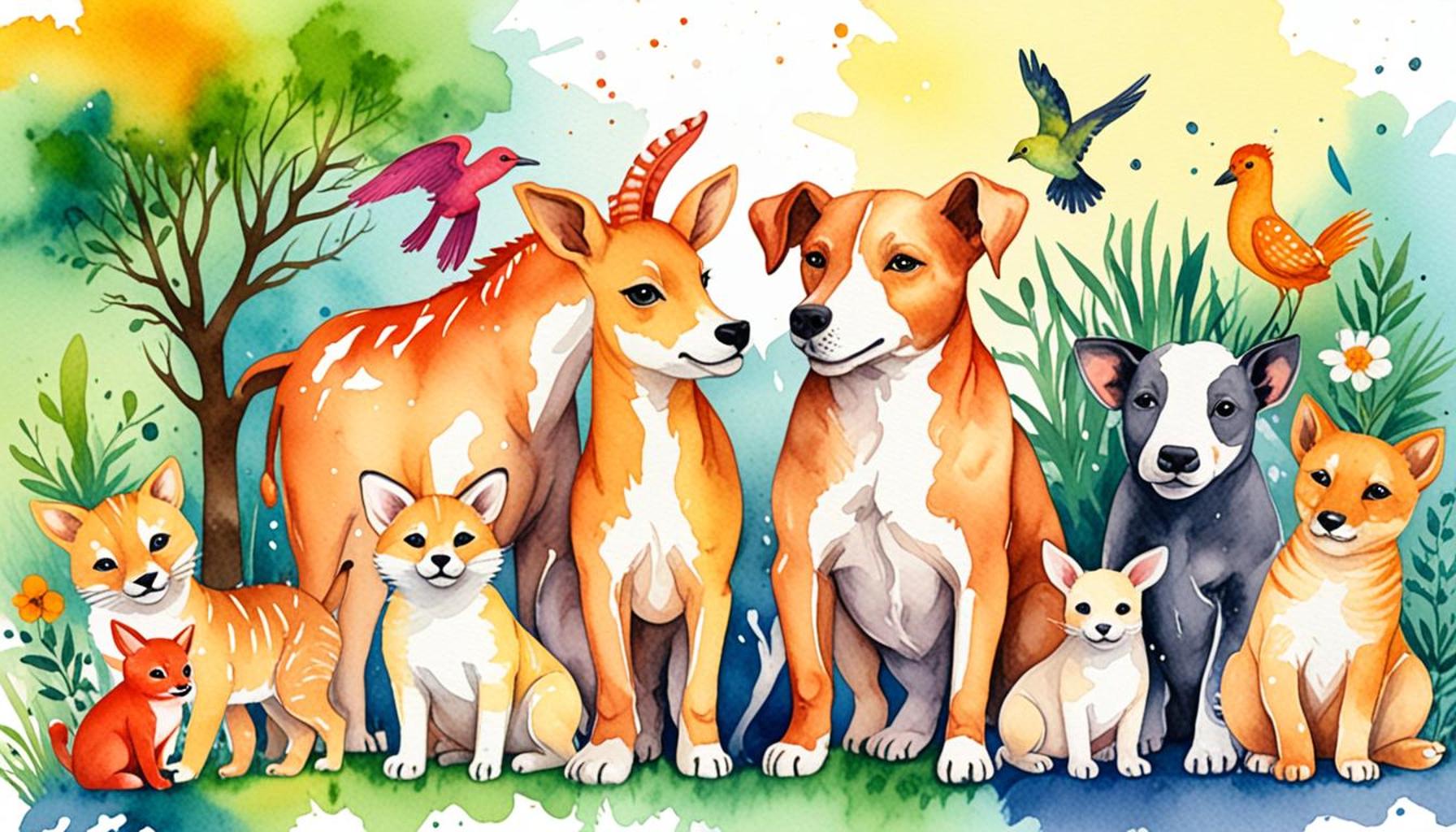Tips for integrating an adopted pet with other household pets

Understanding the Importance of Integration
Bringing a new pet into a home can be an exhilarating experience, but when you already have pets, it requires careful consideration. Integrating an adopted pet with existing household pets presents unique challenges that can impact everyone’s wellbeing. Understanding how to navigate this transition is key to fostering a harmonious environment.
Key Considerations for a Smooth Transition
Successfully integrating a new pet into your household involves several crucial aspects to consider:
- Evaluate Personalities: Each pet has its own temperament. Understanding their behaviors can help in ensuring compatibility. For instance, a playful puppy might not be well-suited for a senior cat who prefers a calm environment. Researching breed-specific traits or observing your current pets’ reactions to different animals can be helpful in this initial assessment.
- Controlled Introductions: Slow and gradual introductions are essential to reduce stress and potential conflict. Begin by allowing the new pet to explore their own space while keeping existing pets at a distance. Gradually introduce the pets through a barrier, like a baby gate, where they can see and sniff each other without physical contact. This way, they can become accustomed to each other’s scents and presence before any direct interactions occur.
- Safe Spaces: Providing safe zones for each pet can ease anxiety during the integration process. Designate specific areas in your home for each pet that are comfortable and quiet. Include familiar toys, blankets, and treats to make these areas feel secure. Having these spaces allows each pet to retreat if they feel overwhelmed, thereby reducing stress levels during the transition.
Adopting Responsibly in the United States
In the United States, a growing number of families are choosing to adopt pets from shelters, highlighting the surge in awareness around responsible pet ownership. The American Society for the Prevention of Cruelty to Animals (ASPCA) reports that approximately 3.3 million dogs enter shelters every year. Many pet owners might underestimate the adjustments required when introducing a new furry friend into a multi-pet household, which can lead to behavioral issues or stress among the pets involved.
Strategies for Success
This article will explore effective tips for integrating an adopted pet with other household pets, ensuring a smoother transition and fostering positive relationships within the family unit. By following these strategies, you can set up your household for success and create a loving environment for all your pets. Understanding that patience and careful planning are crucial components of this process can ultimately lead you to an enriching companionship that benefits both your pets and your family.
For instance, if you notice your pets displaying signs of aggression or distress, such as growling or hissing, it’s essential to pause the introductions and consult a professional trainer or behaviorist who can provide guidance tailored to your pets’ specific needs. Adopting a new pet should be a joyful experience, and with the right steps, it can be an enriching addition to your home.
By taking the time to integrate pets thoughtfully, you can ensure that the new addition is welcomed with open paws, fostering a peaceful cohabitation that allows every member of the family to thrive.
DISCOVER MORE: Click here to learn effective training techniques
Observing and Managing Interactions
Once the initial introductions are made, the next important step in the integration process is to observe and manage the interactions between your new and existing pets. The dynamics that unfold during these early interactions can play a crucial role in setting the tone for their future relationship. Here are some key strategies to ensure that every furry family member feels comfortable and secure:
- Monitor Body Language: Animals communicate through body language, and it’s essential to pay careful attention to the signals your pets are sending. Signs of discomfort—such as lowered ears, tucked tails, or hissing—are indicators that your pets may not be ready for close contact. Conversely, relaxed postures, wagging tails, or playful behavior can signify confidence and openness. Understanding these cues helps prevent potential conflicts from escalating.
- Supervised Playtime: Once pets show initial signs of acceptance, gradually allow them to interact in a controlled environment. Designate specific areas for play, ensuring that you are present to supervise them. This not only keeps an eye on the dynamics but also allows you to intervene immediately if tensions flare. Use toys to facilitate play, as engaging in fun activities together can strengthen their bond.
- Feeding Separately: One of the most significant stressors for pets can arise during mealtimes, particularly if resource guarding is a concern. To avoid conflicts, ensure each pet is fed in a separate area. This creates a sense of security around food and prevents competition, which can lead to aggressive behavior. Maintaining consistency in feeding times can also help establish a routine, further aiding in the integration process.
- Positive Reinforcement: Utilize positive reinforcement techniques to encourage good behavior among your pets. Rewards such as treats, praise, or their favorite toys can establish a link between their interactions and positive outcomes. Each time they interact calmly or engage in friendly play, reinforce this behavior to create a pattern of acceptance.
Patience is Key
Integrating a new pet, especially an adopted one, is not only about managing interactions but also about cultivating patience and understanding. You may face certain challenges during this transitional phase, and it’s crucial to recognize that every pet has its own timeline for adjustment. In fact, according to the Animal Humane Society, it can take anywhere from a few days to several weeks for pets to fully acclimate to one another. Having realistic expectations can prevent frustration and allow for a smoother integration experience.
It’s important to approach the process with empathy. The new pet may be adjusting to an entirely new environment, which can be overwhelming. Similarly, existing pets are trying to understand the changes to their territory. If challenges arise, consider seeking guidance from a professional trainer or behaviorist who specializes in multi-pet households. They can provide tailored strategies to address specific concerns, ultimately fostering a loving and respectful household for all.
By closely monitoring interactions and using these strategies, you can pave the way for a wholesome and gentle integration. Remember that each pet has its own personality and pace, and embracing this will help create a friendly environment that encourages all members of your family to thrive together.
| Integration Tips | Description |
|---|---|
| Create Separate Spaces | Provide distinct areas for the new pet to help reduce anxiety and territorial disputes. |
| Conduct Controlled Introductions | Supervise initial meetings on neutral ground to monitor interactions closely. |
| Use Positive Reinforcement | Reward all pets for calm behavior during introductions, helping to associate each other with good experiences. |
| Be Patient | Understand that some pets may take longer to adjust; slow and steady builds strong relationships. |
Integrating an adopted pet into your home can enhance the social dynamics of your household and promote emotional well-being for all pets involved. It’s crucial to consider your existing pets’ personalities and how they may react to new companions. Utilizing techniques such as gradual exposure, enrichment activities, and shared playtime can foster a harmonious environment. Employing these strategies can significantly reduce stress, prevent behavioral issues, and ensure that your home remains a safe and welcoming space for all animals. By following these tips for integrating an adopted pet with other household pets, you not only support your new family member but also encourage the development of a peaceful multi-pet household.
DIVE DEEPER: Click here for essential puppy socialization tips
Creating Safe Spaces for Each Pet
In addition to managing interactions, creating separate safe spaces for each pet is vital for helping them adjust to their new living arrangements. This practice not only gives each animal a sense of ownership but also fosters a calming environment. Here are some effective strategies for establishing these safe spaces:
- Designated Areas: Provide your adopted pet with a specific area where they can retreat and feel secure. Whether it is a cozy corner of a room or a separate bedroom with their bed and toys, having a designated safe area creates a sanctuary for the new pet to relax. Existing pets should also have their own designated spaces where they can go if they feel overwhelmed.
- Positive Associations: To encourage your adopted pet to utilize their safe space, introduce elements that promote positive experiences. A plush bed, stimulating toys, and tasty treats can help create a positive association with their designated area. The more your pet feels comfortable and safe in their space, the more secure they will feel when interacting with other pets.
- Gradual Exploration: Allow each pet to gradually explore one another’s spaces. After a period of time, gently introduce the scents and belongings of each pet to the others, so they can become familiar with each other’s presence without face-to-face confrontations. This slow-paced approach can help ease anxieties and lead to smoother interactions in shared spaces.
Utilizing Scent to Foster Familiarity
Another interesting aspect of pet integration is leveraging scent to promote familiarity. Animals often rely heavily on their sense of smell to assess their surroundings and social dynamics. Understanding and utilizing this instinct can be a game changer in the integration process:
- Scent Exchanges: Allow pets to sniff each other’s bedding and toys before they meet face-to-face. Gently rub a cloth on each pet and then exchange these cloths to promote scent recognition. When they start to identify each other’s scent as non-threatening, it can reduce anxiety during direct interactions.
- Calming Products: Consider using calming products that contain pheromones, such as diffusers or sprays specifically designed to alleviate stress in pets. These products can help enhance a comfortable environment, making interactions less tense and more friendly. Brands like Feliway for cats or Adaptil for dogs have gained popularity for this purpose.
Scheduled Interaction times
Establishing a routine can significantly impact the success of integration. Animals thrive on consistency, and incorporating scheduled interaction times can help set clear expectations:
- Structured Meetings: Rather than permitting random encounters, set specific times each day for interactions. This consistency helps pets become familiar with the idea of seeing one another and makes them more relaxed knowing when they can expect interactions to occur.
- Short and Sweet Sessions: Keep initial interaction sessions short and gradually extend the time as pets grow more comfortable with each other. The goal is to build positive associations without overwhelming either party.
Injury avoidance should also be at the forefront during these early interactions; consider using baby gates to limit access to certain areas until confidence builds. Moreover, remain vigilant regarding vocal signals or physical altercations, and be prepared to separate them if necessary. Through careful planning and intentional management, you can cultivate a multi-pet household where love and companionship thrive.
LEARN MORE: Click here for essential tips
Conclusion
Integrating an adopted pet with existing household companions can be a challenging yet rewarding journey. As we have explored, the key to achieving a harmonious multi-pet environment lies in several fundamental strategies that promote understanding and patience. Creating safe spaces helps each pet acclimate to their surroundings while providing them with a sanctuary they can retreat to when feeling overwhelmed. This practice is essential for fostering a sense of security that eases the transition for all animals involved.
Scent exchanges are another vital component, harnessing the natural instincts of pets to recognize and accept one another. Ensuring that pets become familiar with each other’s scents before face-to-face interactions can drastically reduce anxiety and fear. Additionally, scheduled interaction times provide structure and predictability, allowing pets to build trust at their own pace. Short, positive meetings can gradually enhance their comfort levels, transforming potential tensions into playful companionship.
Ultimately, remember that each pet has a unique personality and adaptation timeline. Observing their behavior and respecting their boundaries ensures that the integration process proceeds smoothly. With thoughtful preparation, love, and a commitment to a nurturing environment, your household can blossom into a harmonious habitat for all your furry friends. As you embark on this journey, be prepared to witness the beauty of companionship unfold, creating a home filled with love, laughter, and tails wagging in joyful unison. For further insights and tips, consider exploring resources from local animal shelters or professional pet trainers, who can provide tailored advice for your specific household dynamics.


